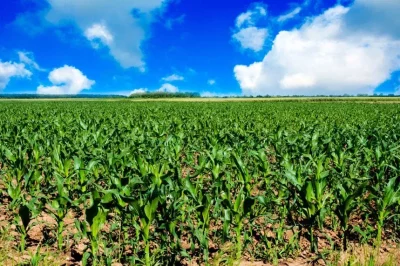Agriculture is critical to Pakistan’s economy, contributing significantly to GDP and employing a sizable population. The recently convened Federal Committee on Agriculture (FCA) meeting, presided over by Federal Minister for National Food Security and Research Dr. Kauser Abdulla Malik, assessed Kharif crop performance and determined Rabi crop output targets for the 2023-24 season. These advancements are essential for Pakistan to meet its Sustainable Development Goals (SDGs), especially those that pertain to poverty alleviation, food security, and sustainable agriculture.
The government predicted a massive increase of 126.6% in cotton production for the 2023-24 season, with an expected yield of 11.5 million bales from an area of 2.4 million hectares. This increase in output may benefit SDG 2, which aims to eradicate hunger, ensure food security, enhance nutrition, and advance sustainable agriculture.
It is anticipated that rice production will reach 8.64 million tons, an increase of 18% and that it will be farmed across an area of 3.35 million hectares, an increase of 12.7% over the previous year. The production of moong beans is also anticipated to rise by 6.4% despite a 9.2% decrease in the allocated area. Additionally, the production of chilies is anticipated to climb by 2.3%, while the mash output is projected to increase by 24.65% from an area of 7,360 hectares. These increases in crop yields and area utilization benefit food security and economic development.
Targeted Wheat Production is 32.12 million Tons, with an Area of 8.9 million Hectares. Wheat is a staple crop in Pakistan. This is critical for ensuring food security and corresponds to SDG 2.
Also Read: Iran urges broad steps in the ongoing Palestinian scenario
According to the FCA’s analysis of water availability, Punjab and Sindh will have a 15% water shortage during the Rabi 2023–24 season. Weather conditions and water management were also covered. Due to the suitable climatic conditions, it seems feasible. In addition to highlighting meteorological conditions, the Meteorological Department’s report emphasized the necessity for efficient management of water resources, particularly in light of evolving climatic trends.
As SDG 1 aims to end poverty worldwide, this is crucial for closing the profit gap between inputs and final goods. The government is taking initiatives to assist farmers by providing cheap inputs and promising higher prices for their goods. Additionally, the State Bank of Pakistan (SBP) has increased its objective for agricultural credit disbursement for the fiscal year 2023–2024 to Rs2,250 billion, a 26.7% increase over the prior year. This action seeks to increase farm productivity and revenue in line with SDG 1 and SDG 8 (decent work and economic growth).
As highlighted at the FCA meeting, the most recent modifications in Pakistan’s agricultural sector are crucial for long-term growth and stability. They support economic growth and crop production while promoting sustainable agriculture, reducing hunger, and achieving several SDGs. The country’s efforts to achieve these sustainable development goals are assisted by effective management of water resources and government initiatives.
International Relations Scholar interested in National Security strategies, with a good focus on Geo-Politics, Foreign Policy, and Public & Cultural Diplomacy.








